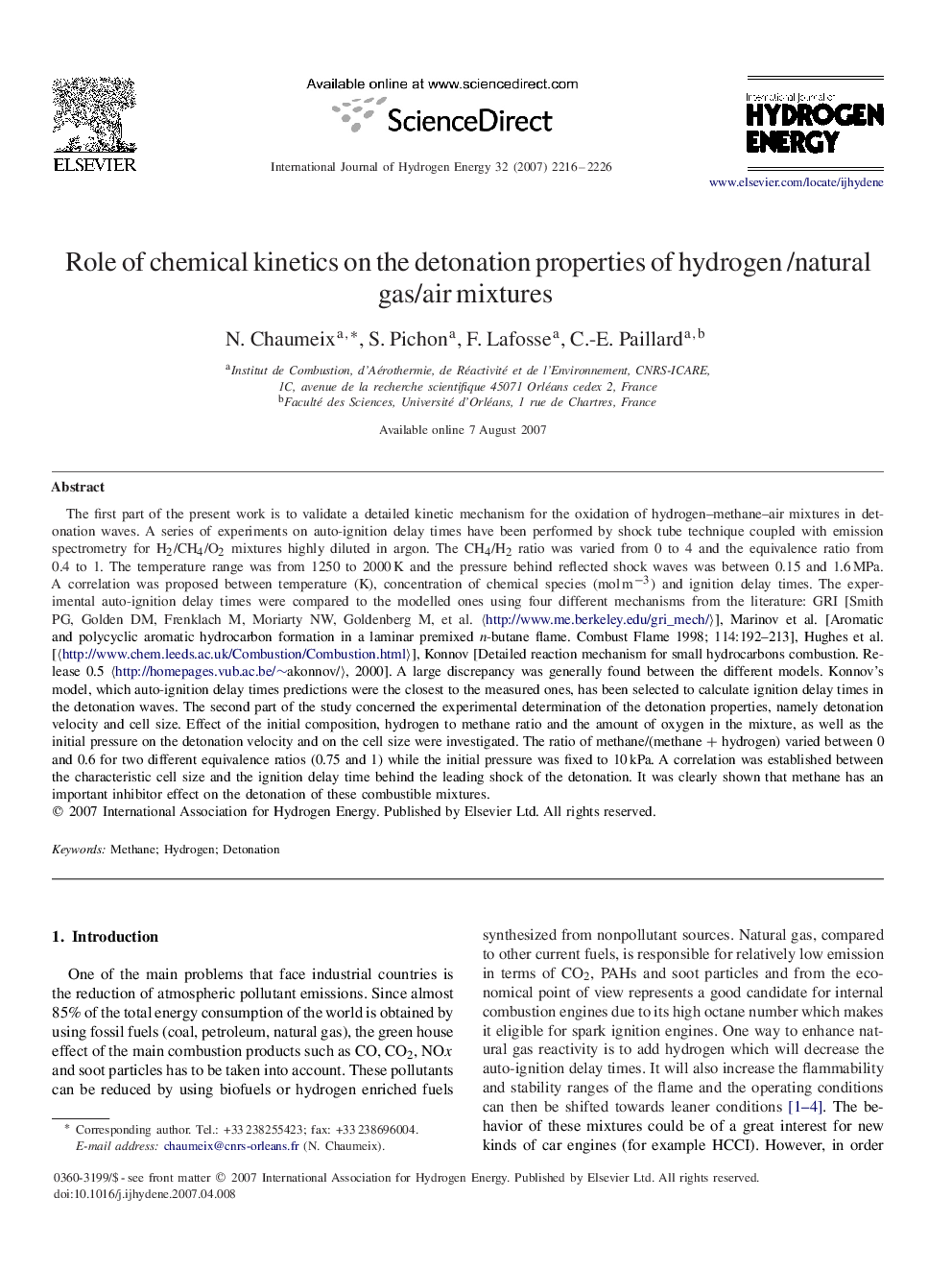| Article ID | Journal | Published Year | Pages | File Type |
|---|---|---|---|---|
| 1280323 | International Journal of Hydrogen Energy | 2007 | 11 Pages |
The first part of the present work is to validate a detailed kinetic mechanism for the oxidation of hydrogen–methane–air mixtures in detonation waves. A series of experiments on auto-ignition delay times have been performed by shock tube technique coupled with emission spectrometry for H2/CH4/O2 mixtures highly diluted in argon. The CH4/H2 ratio was varied from 0 to 4 and the equivalence ratio from 0.4 to 1. The temperature range was from 1250 to 2000 K and the pressure behind reflected shock waves was between 0.15 and 1.6 MPa. A correlation was proposed between temperature (K), concentration of chemical species (mol m-3)m-3) and ignition delay times. The experimental auto-ignition delay times were compared to the modelled ones using four different mechanisms from the literature: GRI [Smith PG, Golden DM, Frenklach M, Moriarty NW, Goldenberg M, et al. 〈〈http://www.me.berkeley.edu/gri_mech/〉〉], Marinov et al. [Aromatic and polycyclic aromatic hydrocarbon formation in a laminar premixed n -butane flame. Combust Flame 1998; 114:192–213], Hughes et al. [〈〈http://www.chem.leeds.ac.uk/Combustion/Combustion.html〉〉], Konnov [Detailed reaction mechanism for small hydrocarbons combustion. Release 0.5 〈〈http://homepages.vub.ac.be/∼∼akonnov/〉〉, 2000]. A large discrepancy was generally found between the different models. Konnov's model, which auto-ignition delay times predictions were the closest to the measured ones, has been selected to calculate ignition delay times in the detonation waves. The second part of the study concerned the experimental determination of the detonation properties, namely detonation velocity and cell size. Effect of the initial composition, hydrogen to methane ratio and the amount of oxygen in the mixture, as well as the initial pressure on the detonation velocity and on the cell size were investigated. The ratio of methane/(methane ++ hydrogen) varied between 0 and 0.6 for two different equivalence ratios (0.75 and 1) while the initial pressure was fixed to 10 kPa. A correlation was established between the characteristic cell size and the ignition delay time behind the leading shock of the detonation. It was clearly shown that methane has an important inhibitor effect on the detonation of these combustible mixtures.
